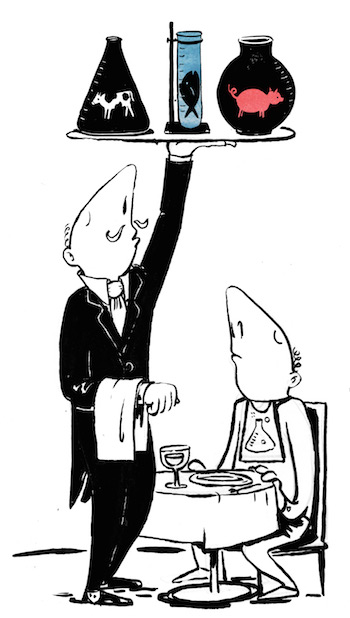ZEITGUIDE TO BIG VS. SMALL FOOD

Gourmet foodstuffs, that default gift for coworkers and distant relatives, now has options more creative than popcorn tins or a box of pears. How about a jar of bacon jam in someone’s stocking, for instance?
Artisanal products are becoming increasingly popular, as food choices (certain ones, anyway) become less about nutrition and more about self-expression. “Food is a hobby for people. It’s no longer just functional,” ZEITGUIDE friend Craig Kanarick told us. He’s the CEO of Mouth Foods, an online seller of independent food brands. “It has come on par with music and film.”
This “small food” industry is now worth $50 billion and growing. These emerging brands woo customers with promises of organic ingredients, better taste or better health—and some consumers form attachments akin to a teen’s obsession with a favorite indie band. “These are artists who are doing it for the art, not because they’re part of this big machinery,” Kanarick adds. “It’s about food made by real people.”
But with small food producers chipping away at market share, major food corporations are getting aggressive with acquisitions. General Mills, Kellogg’s, and Campbell’s Soup are among those now investing in food startups. As investor Will Rosenzweig told Civil Eats, “The warfare for the consumer’s long-term share of stomach is a brutal, expensive game.”
Investments and acquisitions aim to recapture stomach share for major brands, while also giving new products the ability to scale up. The trick, however, is for small food brands to maintain their reputation with consumers even after a Kraft or General Mills logo shows up on the package. For example, cereal maker Kashi saw sales slip after its acquisition by Kellogg and the subsequent organizational changes. But many others, like Ben & Jerry’s after its sale to Unilever, have managed to keep their fans and social mission intact.
Should the acquisition route keep proving fruitful, it may signal a future where, rather than trying to develop their own products, major food companies leave the iterating and market testing to small, artisanal food makers. Then, they can simply acquire the ones that resonate with consumers and apply their massive logistical infrastructure to distribute them.
In Food + Tech Connect, Mike Lee suggests that a savvy Big Food producer could, in theory, use its infrastructure to evolve into a platform for developing and distributing small food brands. Think of it as the Amazon Web Services for food—but instead of server space, it would provide incubator kitchens and co-packagers to lower the bar of entry for food startups. Because we just can’t have too many flavors of kale chips.
